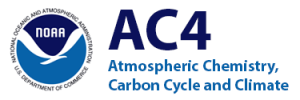- Year Funded: 2011
- Principal Investigators: David Fields, Bigelow Laboratory for Ocean Science
- Programs: AC4 Funded Project
- Biogeochemistry, carbon cycle, Ocean Acidification
- Google Scholar Link
The overall goal of this project is to parameterize how changes in pCO2 levels could alter the carbon export of the world ocean. Specifically, the direct and indirect effects of ocean acidification (OA) will be examined within a simple, controlled predator/prey system using a single prey phytoplankton species (coccolithophore, Pleurochrysis sp.) and a single predator (mesopelagic grazer, Acartia tonsa). The experiments are designed to elucidate both direct effects (i.e. effects of OA on the individual organisms only) and interactive effects (i.e. effects on combined predator/prey system). To meet these goals, a state-of-the-art facility will be constructed with growth chambers that are calibrated and have highly-controlled pH and alkalinity levels. The strength of this work lies in the meticulous calibration and redundant measurements that will be made to ensure that the conditions within the chambers are well described and tightly monitored for Dissolved Inorganic Carbon (DIC) levels. Growth and calcification rates in coccolithophores and the developmental rates, morphological and behavioral effects on copepods will be measured. The Particulate Inorganic Carbon (PIC) and Particulate Organic Carbon (POC) in the algae and the excreted fecal pellets will be monitored for changes in the PIC/POC ratio, a key parameter for modeling feedback mechanisms for rising pCO2 levels. These key experiments will verify closure in the mass balance of PIC, allowing the determination of actual dissolution rates of PIC within the guts of copepod grazers. Data will be disseminated through NOAA’s NODC database.


